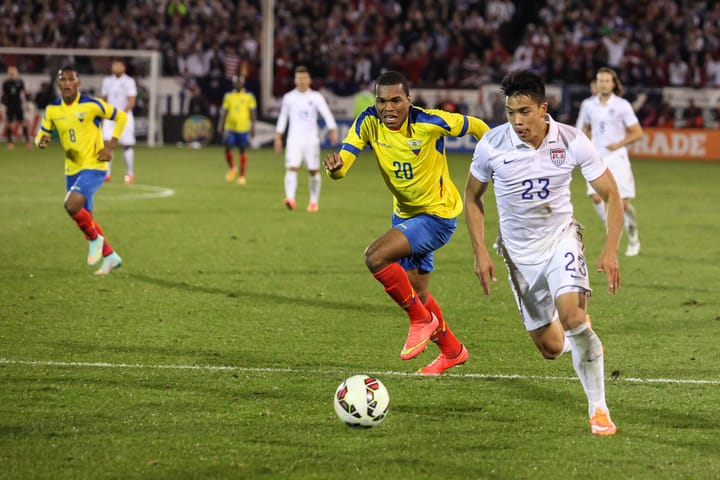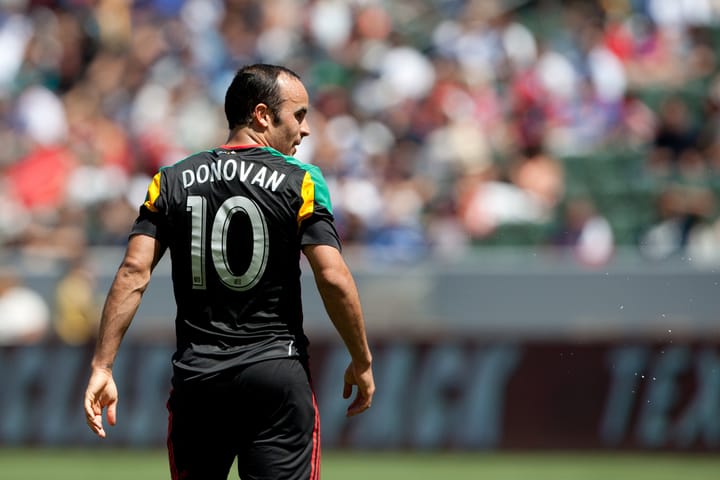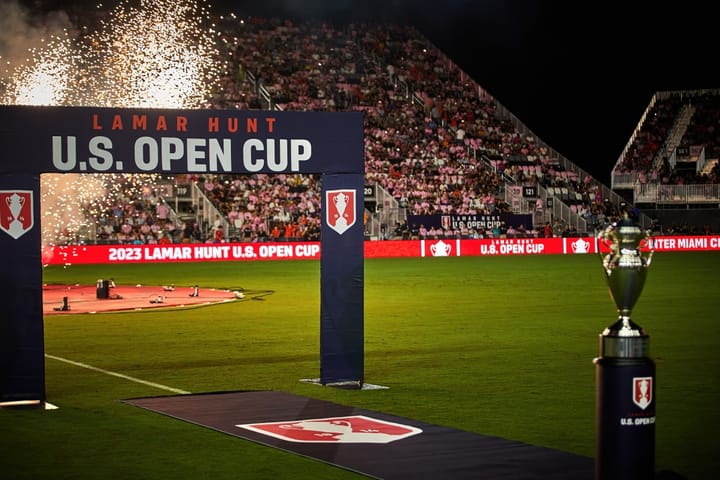Climbing the Ladder: A Comprehensive Look at the U.S. Soccer Pyramid
Soccer in the USA has become increasingly popular over the last 30 years. In this article, we dive into the structure of the USA Soccer Pyramid.

In the diverse landscape of global football, few structures are as unique as the U.S. Soccer Pyramid. Unlike its counterparts in many other countries, the U.S. model does not follow the traditional format of promotion and relegation. Instead, it puts an American spin on the sport, cultivating an ecosystem that spans from local grassroots leagues to the high-stakes intensity of Major League Soccer (MLS).
At the apex of this pyramid sits the MLS, a league that has experienced rapid growth and increasing international recognition since its inception in 1996. Yet beneath the glitz and glamour of the top tier, a wealth of leagues operate at various levels, each playing a vital role in the development of American soccer. From the professional realms of the United Soccer League Championship (USL Championship) and USL League One to the amateur circuits of USL League Two and the National Premier Soccer League (NPSL), these divisions provide a pathway for the country's burgeoning talent, facilitating their journey to the upper echelons of the sport.
This article will delve into the structure, history, and unique features of the U.S. Soccer Pyramid, unravelling the complex tapestry that forms the backbone of soccer in the United States. Whether you're a long-time fan, a curious newcomer, or an aspiring player, join us as we explore the intricacies of this fascinating system and its role in shaping the future of the sport in the U.S.
Major League Soccer
Major League Soccer (MLS): Major League Soccer is at the top of the pyramid. Established in 1996, it is the highest level of professional soccer in the United States. MLS operates under a franchise system, and as of 2023, it has 29 teams, with a 30th team from San Diego joining in 2025. Since its inception in 1996, MLS has grown into the world’s 8th most-attended soccer league, behind the five major European leagues and just behind the Mexican and Argentinian highest leagues.
The league has come a long way since its early years. In the first few years of the MLS (from 1996 to 1999), games tied after regulation did not go into a typical extra period as we see today. Instead, they went straight to a shootout to decide the winner. Even more interesting is that these weren't your usual penalty shootouts. Players would start 35 yards out and have five seconds to score one-on-one against the goalkeeper, similar to ice hockey. This rule was eventually scrapped in favour of the international standard.
Another interesting departure from the global norm in the league's early days was how the game clock was managed. Instead of counting up from 0 to 45 for each half, as is customary worldwide, the clock in MLS games initially counted down from 45:00, and it would stop for stoppages in play, again borrowing from North American sports like American football and basketball. This practice changed in 2000 when the league aligned itself with the FIFA standard of a continuously running clock that counts upwards.
Another unique aspect of Major League Soccer is “The Designated Player Rule (Beckham Rule)”. They were introduced in 2007—primarily to accommodate the arrival of David Beckham—the rule allows MLS teams to sign up to three players whose salaries exceed the team's salary cap. This rule, often called the "Beckham Rule," enabled MLS teams to compete for star talent on the global market. It's been a game-changer for the league, attracting international stars like Thierry Henry, Zlatan Ibrahimovic, and, more recently, Gonzalo Higuain and Blaise Matuidi.
Follow Major League Soccer on YouTube
United Soccer League Championship
The second level of the pyramid is the USL Championship. The USL Championship began operations in 2011 and features teams that are both independently owned and teams that are owned and operated by MLS franchises.
The USL Championship, which started in 2011, has seen rapid expansion in the number of teams competing. In its inaugural season, the league consisted of only 15 teams. By the 2025 season, the league will be expanded to include 29 teams, highlighting the growing interest in soccer across the United States.
Although the USL is not the highest professional soccer league and teams cannot yet gain promotion to the MLS, it is a significant league for developing professional soccer in the US.
Player Development: While the USL Championship is a professional league in its own right, it also plays a critical role in developing players for Major League Soccer (MLS). Many MLS teams have affiliate teams in the USL Championship, and these teams often serve as a proving ground for young players and a place for MLS players to regain match fitness.
International Influence: Though it is a U.S.-based league, the USL Championship has a significant global influence. The league has attracted players from over 70 countries, showcasing various styles and tactics. This international influence helps raise the level of competition and provides a global flavour to the league.
USL League One
USL League One is the third level of professional soccer in the United States. Here are some critical points about USL League One:
Establishment: In 2019, the United Soccer League launched USL League One. The United States Soccer Federation (USSF) has recognized the league as a professional league below Major League Soccer (MLS) and the USL Championship in the American soccer hierarchy.
League Structure: As of 2023, the league comprises twelve teams with a geographic footprint across the United States. Teams play a balanced regular-season schedule, and then the top teams enter a playoff to determine the league champion.
Role in the Soccer Pyramid: One of the primary purposes of USL League One is to facilitate player development. It is a stepping stone for players who aim to advance to the USL Championship or the MLS. Several teams in USL League One are owned by or affiliated with higher-level clubs, serving as a platform for these clubs to develop and assess young talent in a competitive environment.
Expansion Plans: As the MLS and the USL Championship have done, USL League One plans to expand in the coming years. This is part of a broader strategy to grow professional soccer in markets across the United States. Santa Barbara Sky FC and USL Spokane will be the two expansion teams.
USL League One website
USL League Two
USL League Two: Previously known as the Premier Development League, USL League Two is the fourth pyramid tier. This is considered an amateur league, featuring teams with college players looking to maintain their eligibility. Here are some key details about the league:
Purpose and Structure: USL League Two provides a platform for aspiring professional players to gain experience while maintaining their collegiate eligibility. It is a developmental league for players seeking to break into professional soccer. Many players who compete in USL League Two are enrolled in college and use the league to stay fit and compete at a high level during the summer months.
Scope and Reach: The league is extensive and has several regional divisions across the United States and Canada. As of 2023, it included over 80 teams.
Talent Development: USL League Two has successfully prepared players for professional careers. Many players from the league have gone on to play professionally in the MLS, USL Championship, and other leagues worldwide. Some notable alumni of the league include players like Geoff Cameron, Brad Guzan, and DeAndre Yedlin, who have represented the U.S. Men's National Team at the international level.
Format: USL League Two's regular season typically runs from May to July, with playoffs concluding in early August. This schedule allows college players to participate without conflicting with their college soccer season.
National Independent Soccer Association
The NISA is also considered a third-division professional soccer league in the United States, like USL League One. Here are some details about NISA:
Establishment and Structure: NISA was founded in 2017 and, after securing provisional sanctioning from the United States Soccer Federation (USSF), began play in the fall of 2019. The league operates in the third tier of the U.S. Soccer Pyramid, on the same level as USL League One.
Unique Philosophy: NISA is committed to a different philosophy from other U.S. soccer leagues. The league aims to introduce promotion and relegation to American soccer and has expressed a desire to remain free from franchise fees, which are typical in American sports leagues. Instead, NISA focuses on helping local and independent clubs grow organically.
Teams and Season Structure: As of 2023, the league has nine teams across the United States. The NISA season is split into two halves: spring and fall, with the winners of each meeting in a championship game.
Developmental Role: NISA provides another pathway for players, coaches, and clubs seeking to grow professionally. It offers competitive professional soccer to markets that might otherwise be unable to support a team in a higher-level league.
National Premier Soccer League
The NPSL is commonly recognized as a fourth-tier league. Like USL League Two, it is considered an amateur league. Here are some key details:
League Structure and Placement: The NPSL is generally recognized as a fourth-tier league in the United States. While officially, it is considered an amateur league, many of its teams are composed of players with professional aspirations and abilities.
Broad Reach: The NPSL is one of the most significant soccer leagues in the United States regarding the number of clubs. As of 2023, the league comprised over 90 teams from all across the country. The teams are divided into regional conferences to minimize travel during the regular season.
Season Structure: The NPSL operates primarily during summer to accommodate college players who wish to maintain their NCAA eligibility. The regular season typically begins in May and ends in July, after which regional and national playoffs end in a championship game.
Role in Player Development: The NPSL has been a significant platform for young players to showcase their talents over the years. Many players have moved on to play in higher professional leagues in the U.S. and abroad. It's also a place for experienced players to continue competing at a high level.
Community Involvement: NPSL teams are often deeply rooted in their local communities, which makes them an integral part of the soccer landscape in the United States. Many teams have strong local followings and contribute to the sport's growth at the grassroots level.
Below these top levels of the US Soccer pyramid, there are many local and amateur leagues; a few of the more well-known ones include:
USASA (United States Adult Soccer Association): The USASA is a national organization and sanctioning body for amateur soccer in the United States. It consists of 54 state organizations, regional leagues, and at-large teams. USASA leagues cover various skill levels, including open and age-restricted divisions (over 30 and over 40).
UPSL (United Premier Soccer League): The UPSL was founded in Los Angeles and has grown to include teams across the United States. It's structured in a tier system with promotion and relegation and includes both the spring and fall seasons. The UPSL strives to align itself with the global standard of soccer by integrating the amateur soccer community with a pro-development pathway.
UPSL website
UPSL on YouTube
Cosmopolitan Soccer League (CSL): Based in New York City, the CSL is one of the oldest soccer leagues in the United States and has operated since 1923. The league has produced several teams that have succeeded in the U.S. Open Cup.
CSL website
These lower leagues and many others like them play a crucial role in developing soccer in the United States, offering competitive outlets for players of varying ages and abilities and fostering a robust soccer culture.
It's important to note that the US soccer pyramid is not strictly a promotion/relegation system, as is common in many other countries. Most of these leagues operate independently, and moving up from one to the next typically involves expansion fees and franchise establishment rather than on-field success. However, there has been an ongoing discussion about creating a system of promotion and relegation in American soccer.
This video gives another overview of the US Soccer Pyramid.




